I attributed this to a combination of soft ground (it's just backfill, really, as the whole club property is entirely artifical and not particularly well-draining) and to a slight, but critical, misplacement of the boat when laid to rest, making it a tad heavier than needed on the forepart of the cradle.
The result can be clearly seen even from the spring: The whole operation is trying to make like a lawn quoit and sink into the gravel. I had to lash things, including the new engine, to the rails and bollards to keep them from rolling or shifting forward. While this was annoying from the view of painting and walking near open hatches, it wasn't likely critical or dangerous...until the time approached for putting in the engine. "Zeroing" an engine on its stringers and mounts so that it is very, very close to having its rear coupling mating firmly and evenly with a similar coupler on the non-propped end of the shaft is the key to avoiding wear on the transmission, shaft, prop and important, moving and expensive bits of the diesel...and it makes the boat considerably quieter. The tolerances involved are near those found in getting a new crown for a tooth...hundredths of a inch. Now, the use of a CV coupler joint mitigates this need for exactitude somewhat...but you still have to be close. Having measured the pitch angle of Alchemy at sixdegrees and likely advancing, I thought that trying to line up a seven-hundred pound engine and a five-foot steel shaft would be problematic...so I thought I'd move the boat by hand.
Don't giggle now: this actually worked for a bit. It's a 20-tonne hydraulic bottle jack (due to the shape), and it moves a sturdy piston up by tiny amounts with each manly crank of its inadequate handle. The problem was that the boat's at least 15 tonnes, and wants to get closer to the core of the Earth when out of the water. Cranking on the handle basically drove the jack into the yielding ground and especially into the various planks and boards I shoved under it to spread the load. I was able to get in a few steel shims, but even after I started to have better results after lobbing a sack of marble-sized gravel under the boards, I didn't like the alarming noises everything made, nor the extreme leisure with which things actually happened due to the ratio of arm-pumping to real-world lifting. Note that the theory was sound but the execution lacking, and let that be a lesson to all sailors.
Eventually, this past weekend, I prevailed upon my club's "Haulout" committee to fix the problem properly by hoisting Alchemy upwards a few feet and pulling the whole cradle out of the hole it had dug for itself, forward a couple of feet to improve the balance of the boat over its pads, and onto some strategically placed lengths of lumber.
The difference was immediate and gratifying. Water long trapped on deck gushed profusely out the stern scuppers and off the side decks. The "lifts" on the front of the cradle did not immediately sink into the ground, probably because the cradle move rolled a lot of my gravel forward in a helpful fashion.
While the whole operation took a crew of volunteers and plenty of semi-learned discussion before and during the cradle repositioning (which took place on a cold and damp day at dawn as the first hoist of a busy day for the club), it was executed perfectly. Nothing inside the boat budged, although I had made attempts to brace toolboxes and paint drums adequately.
This shows how far forward the cradle moved. The boat went up and down largely in the same position.
Evidence of success. The boat is now about one degree high at the bow...but I fully expect it to sink a few millimeters, which will put me where I want to be.
The new attitude: Up, up and aweigh anchors.
So here again is another learning opportunity. What I know about levers stopped at the see-saw I last rode as a tyke. But basic principles properly understood gave me a workable, if tedious, answer (the bottle jack, which I will use in the engine installation and elsewhere to lift really heavy things small distances), but also showed that the lift was a safer and much, much faster option, once I had worked out, in consultation with other amateur engineers among my club friends, the best way to shift 15 tonnes of beached boat.

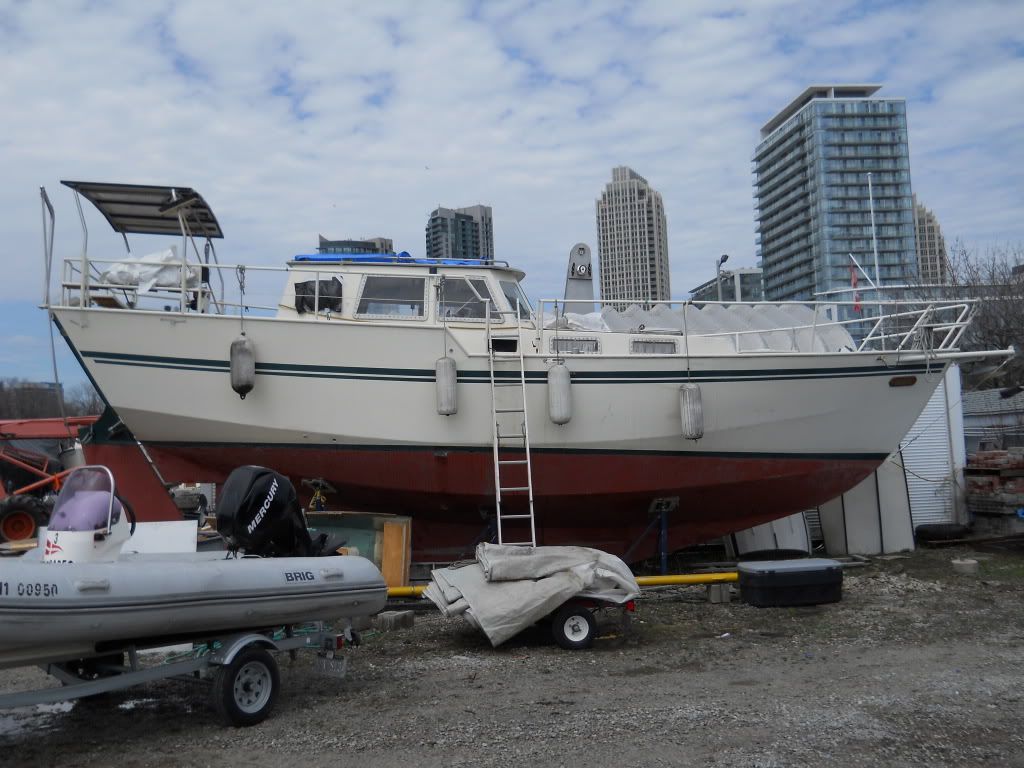
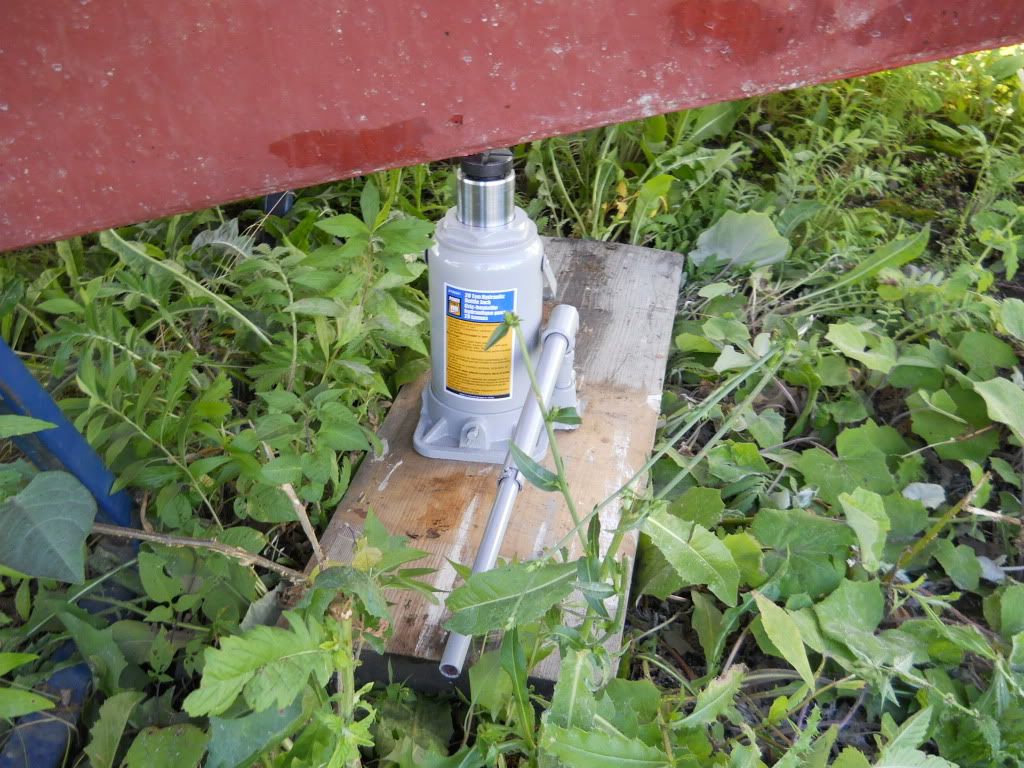
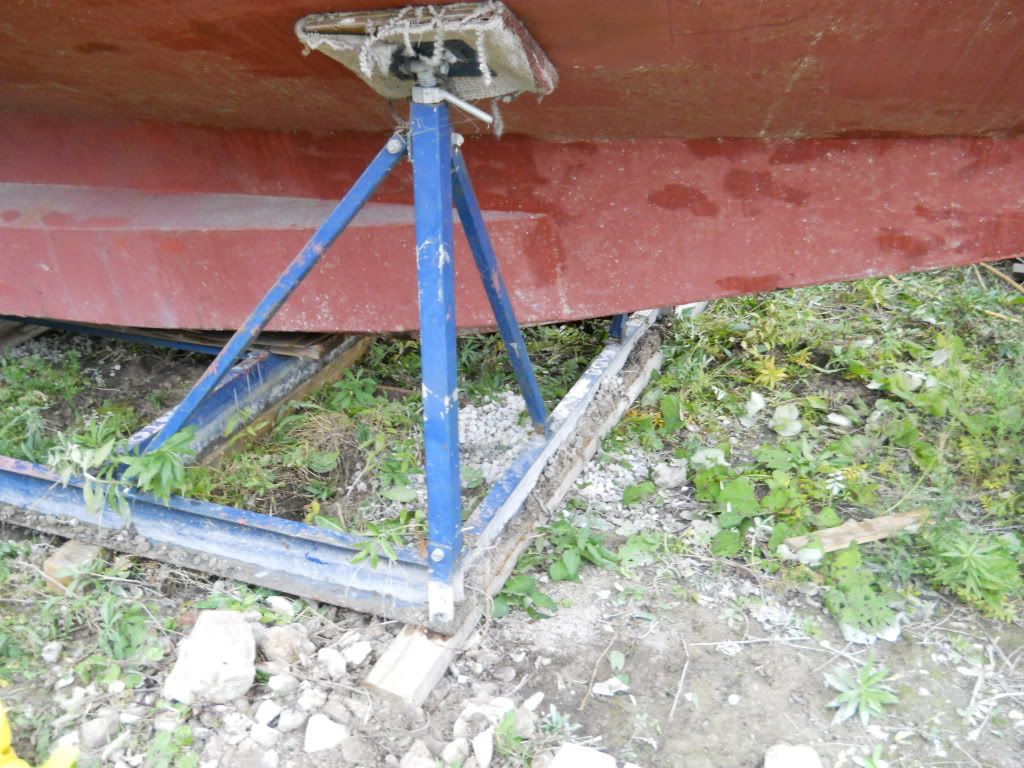
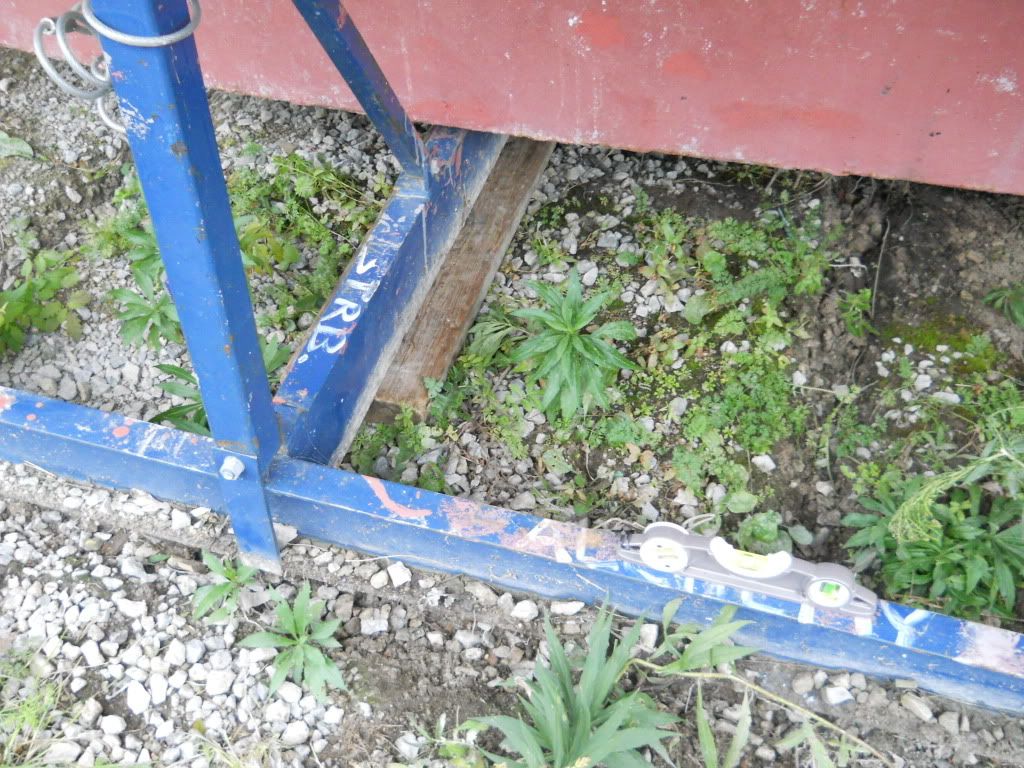
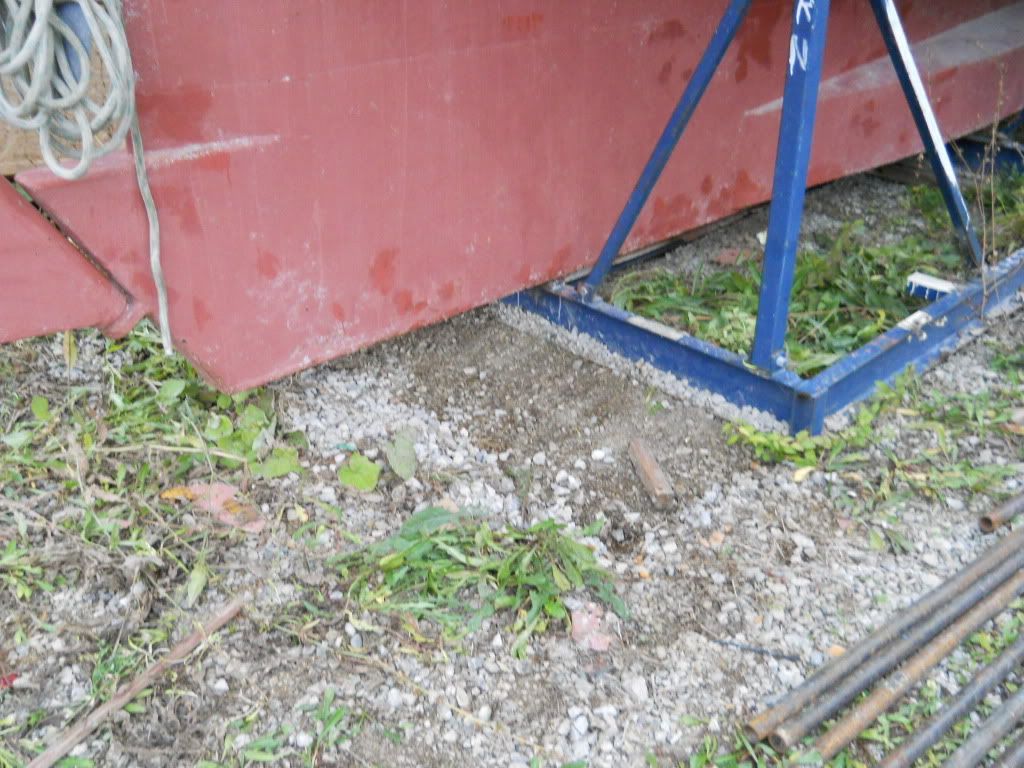
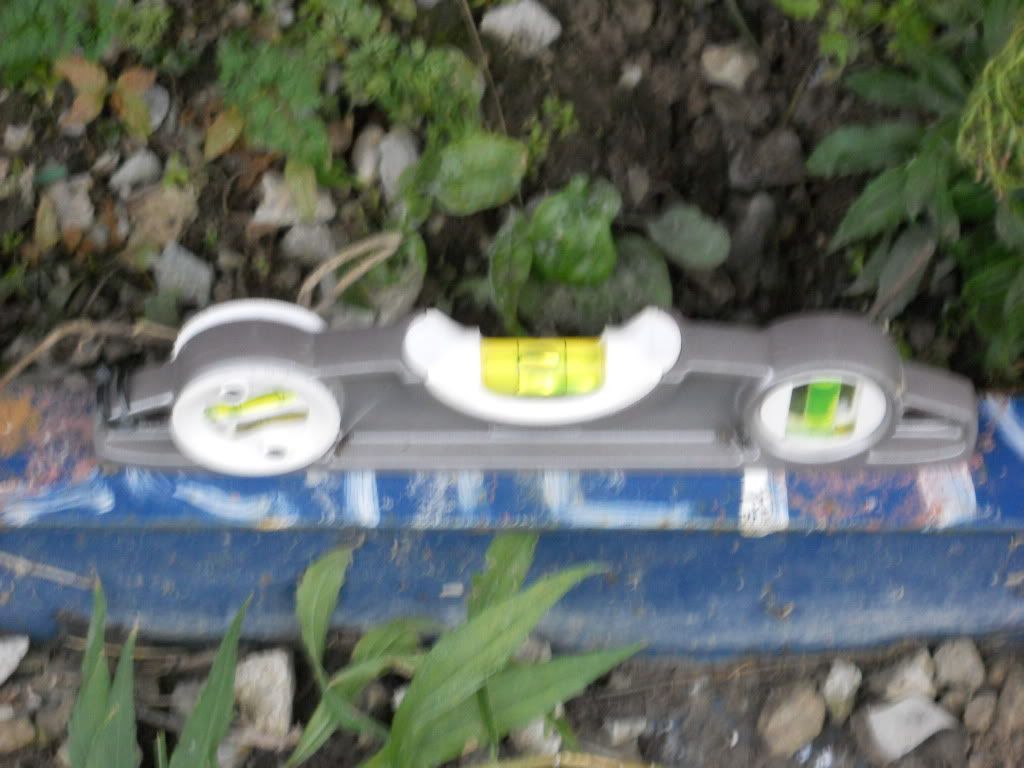
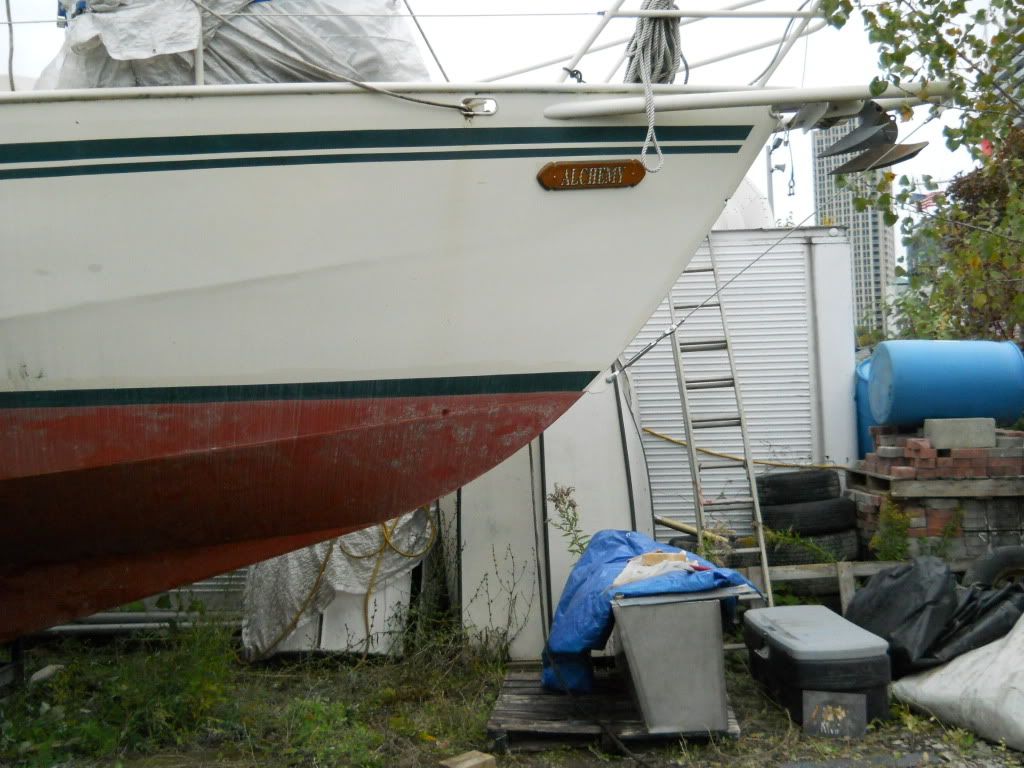





2 comments:
Nice work leveling the old gal.On Silverheels III We uses a $15 laser level extensively inside the boat to transcribe lines in the hull for engine alignment and also to produce marked heights from one place to another for engine mounts. We also aligned the rudder, keel and saildrive leg using the laser produced perfectly razor sharp straight beam after nightfall.
Thanks, Ken. I have a little calibrated level as you can see, but I also have a laser level I use inside. The combination of hard chines plus curved sections means there are few 90 degree angles in the boat, save for the bulkheads, so I have to measure thrice, laser or no.
Being level makes a huge difference. I hadn't realized that I was getting tired feet from being on a slope all the time.
Post a Comment